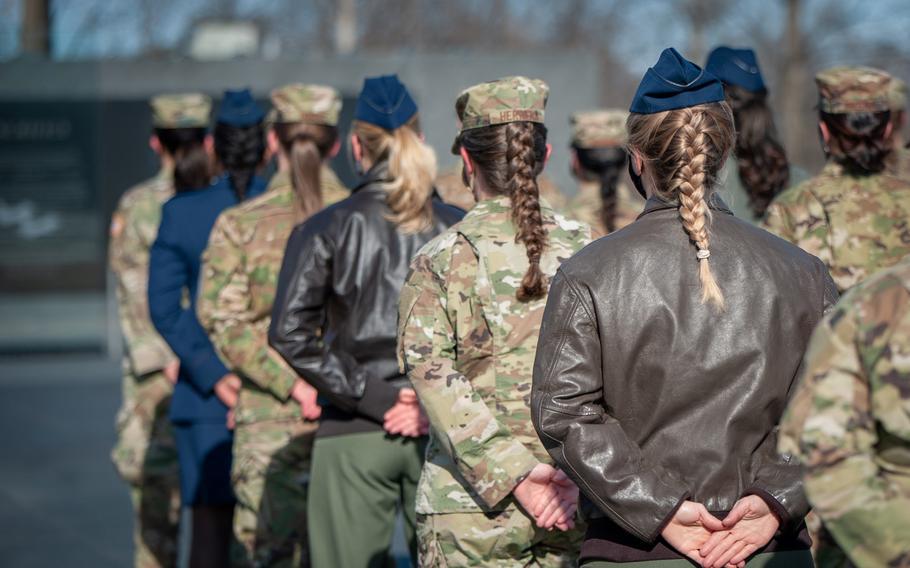Explore the silent struggle of military sexual trauma among female veterans and its alarming link to rising homelessness. This post delves into statistics, unique challenges, and the importance of targeted support. Join the conversation to support our female veterans.#MST #FemaleVeterans #HomelessnessAwareness #SupportOurHeroes
In a poignant revelation, nearly 45% of female veterans seeking assistance through the Department of Veterans Affairs' homeless programs in fiscal 2023 have documented histories of sexual trauma during their military service. This alarming finding underscores the profound impact of military sexual trauma (MST) on the lives of female veterans, contributing to a concerning rise in homelessness within this demographic.
The Disturbing Connection:
A. Statistics Unveiled:
As reported by the Department of Veterans Affairs, the startling statistic reveals that nearly half of the female veterans in VA homeless programs have faced the harrowing ordeal of sexual trauma while serving in the military.
B. Implications on Homelessness:
The correlation between MST and the increasing rate of homelessness among female veterans cannot be ignored. Terrence Hayes, VA press secretary, emphasizes the link between "sexual assaults and threatening sexual harassment" and the challenges these survivors face, including homelessness.
Understanding the Impact:
A. Struggles with Readjustment:
Hayes notes that many MST survivors grapple with readjustment issues and disruptions in core areas of functioning and well-being. The difficulties, including homelessness, stem from the silent suffering of survivors who feel isolated in their experiences.
B. Unique Challenges for Female Veterans:
Dr. Charles Weber, a psychiatrist and retired Army lieutenant colonel, sheds light on the unique challenges faced by female veterans. Issues such as childcare responsibilities, the risk of domestic violence, financial independence, and employability significantly impact housing stability, increasing the likelihood of homelessness.
Rising Numbers and Hidden Identities:
A. Increasing Homelessness:
Despite an overall decline in veteran homelessness, the number of homeless female veterans rose by 10% from 2020 to 2022, as reported by the Department of Housing and Urban Development.
B. Hidden Identities:
Hayes highlights a critical issue – female veterans might not readily identify themselves when seeking housing and services, potentially disqualifying them for assistance. Fear of losing custody of dependent children often leads to non-disclosure of immediate housing needs.
Overcoming Barriers and Providing Support:
A. Breaking the Silence:
Efforts to overcome these barriers involve employing women veterans as peer support specialists in housing programs. This approach aims to develop rapport, engender trust, and create a supportive environment.
B. Legal Clarity and Outreach:
Hayes suggests clarifying state and local laws during outreach encounters to address the legal uncertainties that female veterans may face when seeking assistance.
The Future: Rising Numbers and Financial Challenges:
A. Projected Growth of Female Veteran Population:
Despite constituting only 10% of the current veteran population, female veterans are the fastest-growing group. Projections indicate that they will comprise 20% of the veteran population by 2040.
B. Financial Challenges:
Women, on average, make lower wages than men and encounter more barriers to full labor market participation. These financial challenges, combined with childcare responsibilities, contribute to the increased risk of homelessness among female veterans.
VA Support and the Path Forward:
A. Essential Housing Assistance:
Hayes emphasizes the critical role of the VA's supportive services for veteran families, providing emergency housing assistance for up to two months in a two-year period. This assistance plays a vital role in preventing female veterans from falling into homelessness.
B. Successful Outcomes:
Statistics reveal that women who transition from homelessness to permanent housing often experience successful outcomes. However, the data also highlights that there is more work to be done, as a percentage of female veterans still return to homelessness after receiving VA assistance.
Conclusion:
In conclusion, the nexus between military sexual trauma and the rising rate of homelessness among female veterans is a call to action. This blog post aims to shed light on the silent struggles faced by these resilient women, emphasize the need for targeted support, and encourage ongoing efforts to eradicate the root causes of homelessness within this demographic.
















